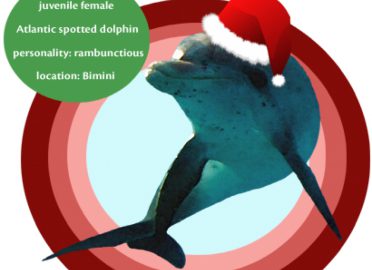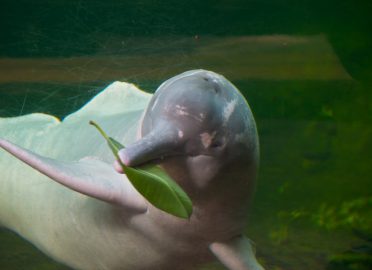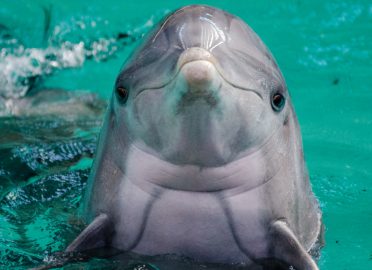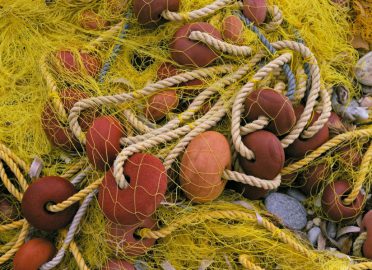Arrived to Nassau and greeted by warm sunshine!
Allison and I arrived today, albeit on different flights. We are settled in at our lodging and have groceries stocked. Our cameras are prepped - batteries charged, tapes loaded. I spoke with Mr. Johnson to coordinate our pick up transportation for tomorrow.
We are ready to collect data! And, I will introduce Allison to the DE team and the dolphins bright and early tomorrow morning! Dawn arrives tomorrow and we'll bring her up to speed.
We'll have an update on our first round of observations and data collection tomorrow.
Cheers
Kathleen & Allison (& Dawn & Dee ...
All Packed and Ready to Go!
As the song says ... "all my bags are packed and I'm ready to go ..." Departure is Saturday morning from Fort Lauderdale (for me) to Nassau, The Bahamas. There is not much of a climate change for me with this trip, but I do believe the temps will be a bit warmer than currently in FL!
We arrive tomorrow and will get settled in and prepare the MVA2 and cameras for observations and data collection. We head out to DE on Sunday bright and early.
I'm looking forward to assisting on this trip.
DCP Research at Dolphin Encounters – 2016
In two days, I depart for Nassau, The Bahamas, for a week of data collection at Dolphin Encounters at Blue Lagoon Island (DE). I'm looking forward to returning to DE to continue our research, meet the new dolphins and touch base with the training team! This research trip is a bit different for me/DCP. It will include three colleagues from two universities and focus on collecting data to better understand creativity in dolphins.
Drs. Deirdre Yeater and Dawn Melzer, both Assistant Professors from Sacred Heart University, and Dr.
Order by tomorrow for pre-Christmas delivery!
Our adopt-a-wild-dolphin kits make great Christmas gifts. In order to ensure pre-Christmas delivery of our hard copy kits, be sure to place your order by tomorrow, Friday 18 December, by 5 p.m. EST and choose expedited shipping.
Twenty Two Fantastical Facts about Dolphins – my new book!
Dear friends,
I am super psyched to announce the publication of my latest book, Twenty Two Fantastical Facts about Dolphins!
Holiday Specials Are Here!
DCP is offering two special holiday gift offers at no extra cost to you!
Special #1: buy a print version adoption kit between today (Black Friday) and Friday, Dec. 4th, to receive 4 extra randomly selected dolphin trading cards!
Special #2: Buy an adoption e-kit between today (Black Friday) and the end of the year (Dec.
Thankful for ChameleonJohn.com
Happy Thanksgiving from DCP! This year, we are once again thankful for all of our supporters and today we add ChameleonJohn.com, a US-based online coupon company, to that list. We are grateful to be a part of ChameleonJohn’s current campaign to help non-profits. Thank you, ChameleonJohn.com!
If your company is interested in becoming a corporate sponsor of DCP, please contact us at info{at}dcpmail{dot}org.
Dolphins sometimes carry weapons
*The following blog post is an excerpt from the book Twenty-Two Fantastical Facts about Dolphins*
Psychologists have learned that holding an otherwise innocent object in your hand – like an umbrella – makes onlookers perceive you as more dangerous than if you were empty-handed. This same, subconscious fear of weapon-like objects is lodged in the minds of many of our primate cousins. Our closest relatives – chimpanzees – appeal to this weapon-fear bias by waving tree branches and logs in the air when trying to make themselves look larger and more intimidating. And by golly it works.
Dolphins don’t sleep
*The following blog post is an excerpt from the book Twenty-Two Fantastical Facts about Dolphins*
Almost all animals that live in the ocean are able to breathe water – extracting the life-giving oxygen that’s swishing around in seawater with their gills. Crustaceans, fish, clams, amphibians – they all have gills, and don’t need (and generally prefer to avoid) air. But marine mammals – which include dolphins, whales, seals, manatees, sea lions, otters and a handful of others – still need access to air in order to get their oxygen.
Dolphins almost never drown
*The following blog post is an excerpt from the book Twenty-Two Fantastical Facts about Dolphins*
Being an air-breathing animal living in the ocean brings with it a number of challenges. Chief among them is trying not to drown. The paradox/problem of living in an aquatic environment but needing to be at the surface to breathe is something that manatees, sea turtles, whales, and dolphins have to cope with on a daily basis. But for dolphins, drowning in the traditional sense (which involves inhaling water into your lungs) is not really the problem.










